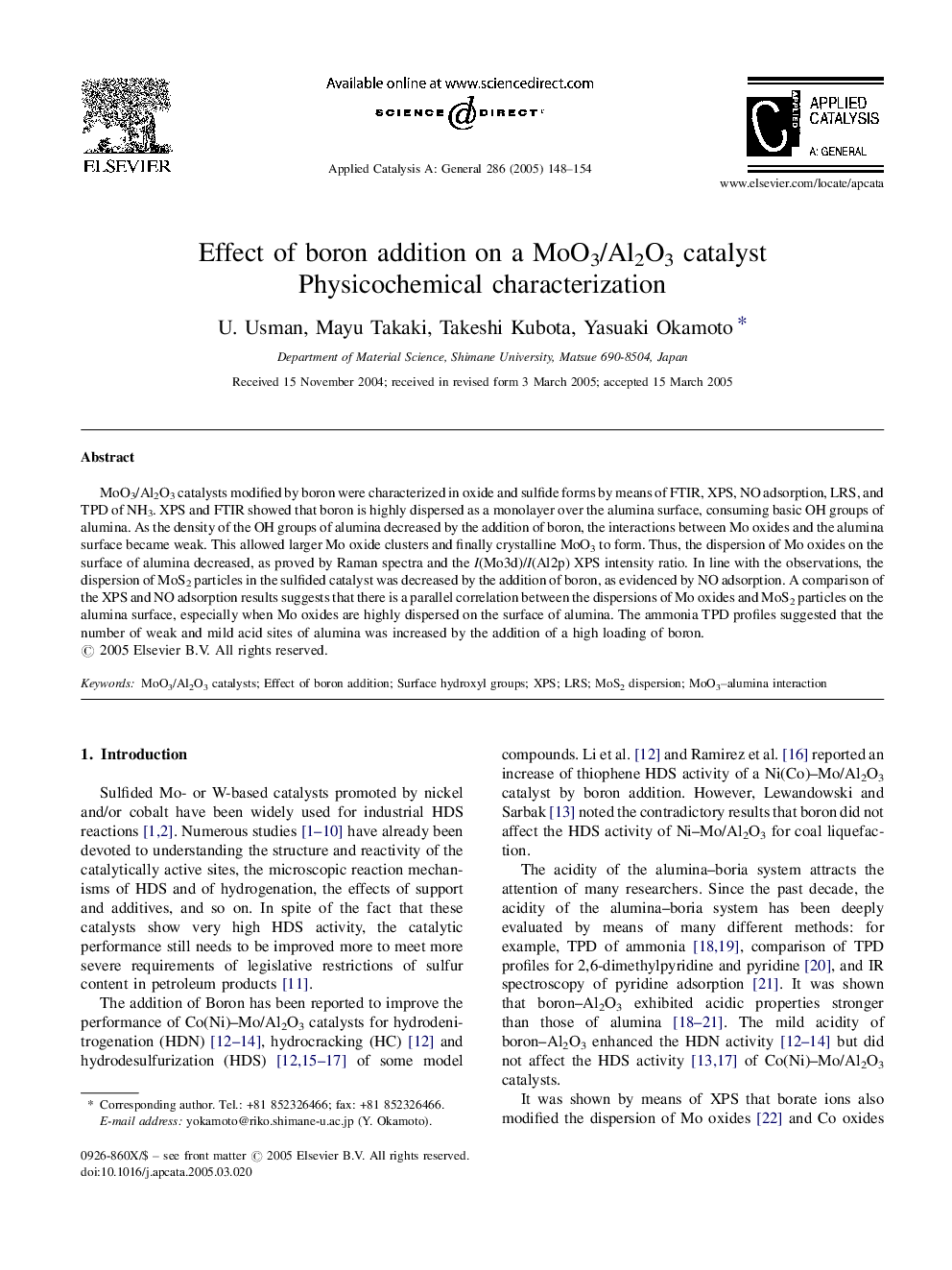| Article ID | Journal | Published Year | Pages | File Type |
|---|---|---|---|---|
| 10239285 | Applied Catalysis A: General | 2005 | 7 Pages |
Abstract
MoO3/Al2O3 catalysts modified by boron were characterized in oxide and sulfide forms by means of FTIR, XPS, NO adsorption, LRS, and TPD of NH3. XPS and FTIR showed that boron is highly dispersed as a monolayer over the alumina surface, consuming basic OH groups of alumina. As the density of the OH groups of alumina decreased by the addition of boron, the interactions between Mo oxides and the alumina surface became weak. This allowed larger Mo oxide clusters and finally crystalline MoO3 to form. Thus, the dispersion of Mo oxides on the surface of alumina decreased, as proved by Raman spectra and the I(Mo3d)/I(Al2p) XPS intensity ratio. In line with the observations, the dispersion of MoS2 particles in the sulfided catalyst was decreased by the addition of boron, as evidenced by NO adsorption. A comparison of the XPS and NO adsorption results suggests that there is a parallel correlation between the dispersions of Mo oxides and MoS2 particles on the alumina surface, especially when Mo oxides are highly dispersed on the surface of alumina. The ammonia TPD profiles suggested that the number of weak and mild acid sites of alumina was increased by the addition of a high loading of boron.
Keywords
Related Topics
Physical Sciences and Engineering
Chemical Engineering
Catalysis
Authors
U. Usman, Mayu Takaki, Takeshi Kubota, Yasuaki Okamoto,
